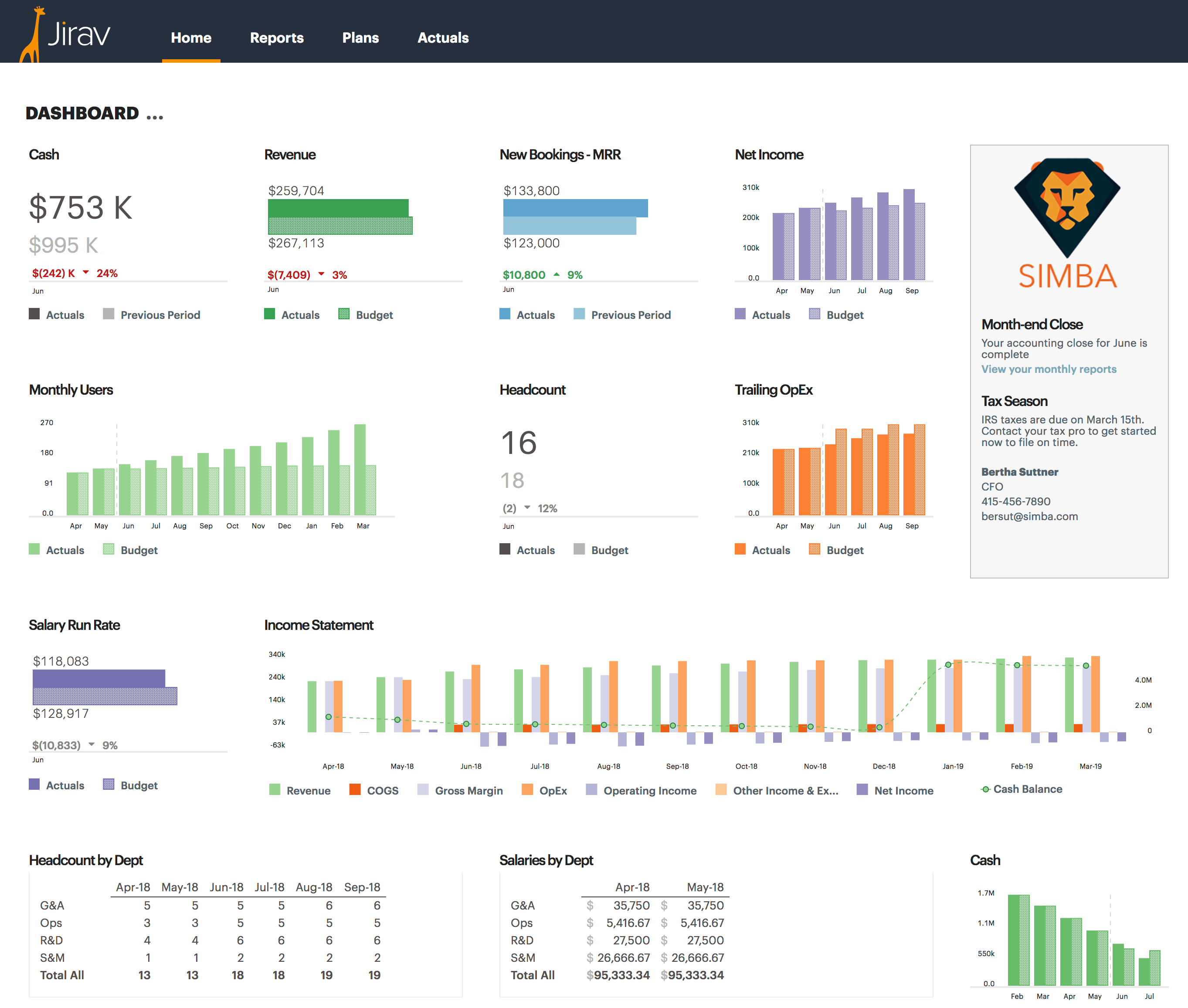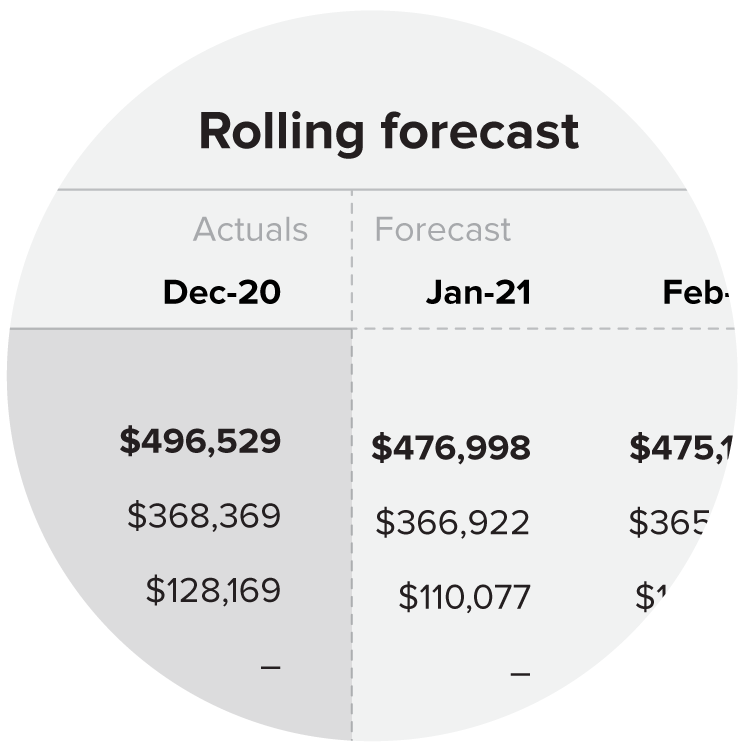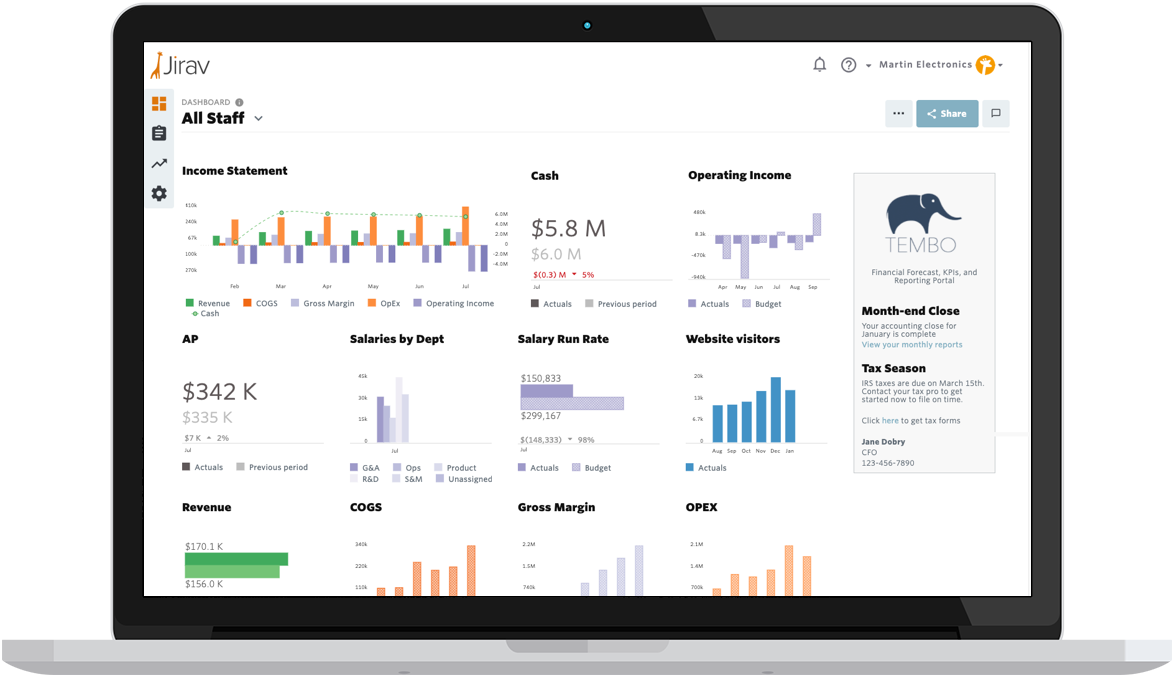👋 Hey there,
Is your company in the middle of a turbulent financial journey in 2023?
You are not alone.
This was expected and may continue into 2024.
As the gatekeeper of financial information, YOU can help your company and your clients (for those of us who are accounting firms) prepare.
How? By using this secret weapon: the company’s annual plan.
Today, in collaboration with Jirav, we will help you put your FP&A hat on to find annual plan growth in 3 key areas.
Along the way, we’ll cover the following:
- What is an annual plan?
- Why an annual plan is important
- Who benefits from an annual plan
- Challenges in creating and achieving annual plan targets
- 3 key areas to find annual plan growth
Growth is NOT easy to achieve nowadays.
You can see it in your company’s financial data (yep, we’re talking to you accounting firms, corporate accountants, and financial team leaders).
And YOU can use the annual planning process to find hidden growth gems and navigate these turbulent times.
Your search for ideas starts now.
Let’s dive in. 🏊
What is an annual plan?
How much money is your company going to make next year?
Hint: your company’s annual plan should tell you.
An annual plan is a company’s financial roadmap for the upcoming year.
Other terms used interchangeably with an annual plan include:
- Annual Operating Plan (AOP)
- Budget
- Annual forecast
- Op Plan
A great annual plan will provide forward-looking financial statements
[Example: 3 Way Financial Statements in Jirav]
A best-in-class annual plan aligns financial information with EVERY department and stakeholder to ensure all are working towards common goals.
And that’s why your company’s annual plan is kind of a big deal.
Why is an annual plan important?
Focus on the word “PLAN.”
Every company has a ton of moving parts:
- Customers
- Vendors
- Employees
- Contractors
- Partners
Without a plan, how can you ensure these parts are achieving desired results linked to common company goals?
Answer: Trick question, you can’t!
Herding cats would be easier.
Just ask Alphabet’s CFO (she knows a thing or two about financial planning):
“I want milestones. I want to know in six months when we’re sitting down with the midyear plan, what would you like to have achieved? Everybody has to have a plan against which they’re executing.”
-Ruth Porat, CFO, Alphabet (Source)
Help everyone in the company stay on track, with clear plans to achieve common company goals.
That’s how you, your company, and your clients win. 💪
Who benefits from an annual plan?
Anyone making decisions at a company can benefit from a best-in-class annual plan.
This includes Sales, Marketing, Finance, Operations, Product…you name it (this list is not exhaustive).
Why do they all benefit?
Because having a plan enables autonomous decision-making.
Teams can make timely decisions with confidence, knowing what they’re doing is in the interest of achieving company goals. When you make a plan, share it with teams, and show them the parts that relate to their areas, people are more invested in the success of the plan. It also holds teams accountable.
Can the marketing manager spend $10k on that new logo?
If it was in the plan, go for it.
The trick?
Ensure plans are tied to financial targets (aka KPIs and metrics).
🔥TIP: read this to learn more about KPIs and metrics.
These financial targets are then connected to the company’s goals.
For example, your company or client may have a goal to double its market valuation next year.
The KPIs linked to that company goal could be:
- Grow revenue by $10m
- Maintain profit margin of 20%
- Report positive operating cash flow each quarter
These goals and the KPIs linked to them are VERY important.
Because many people benefit from achieving them:
✅ Shareholders— the company keeps its growth promise
✅ Employees—commissions and bonuses get paid out
✅ Career prospects for in-house FP&A — helped orchestrate a target-achieving year
✅ Advisory accounting firm — ensured client success and growth for years to come
This brings us to the challenge everyone faces in the annual planning process:
Setting targets EVERYONE buys into.
Challenges in Setting Annual Plan Targets
Have you commuted somewhere recently?
Commuting is a great example of target setting. 🎯
Let’s say you need to go from point A to point B in 30 minutes.
To buy into this 30-minute target to get from point A to point B, you need:
- Motivation to get there
- Confidence you can get there in that time
- Constant feedback during the journey to adjust if needed
The motivation part is related to personal goal setting—point B must be a great place to go.
The confidence and constant feedback part can be achieved with access to information—a phone navigation app does this brilliantly.
A company is no different.
✅ You can check the company motivation box by tying personal compensation (bonuses, commissions) to company goal achievement.
✅ You can check the confidence and constant feedback boxes by ensuring financial information is readily available.
[Example: Track and Measure Actuals Against Plan in Jirav]
Now the search begins.
Let’s find some company growth and attach targets to it.
3 Key Areas to Find Annual Plan Growth
Every financial number is important (we’re finance people and a little biased).
But numbers are THE MOST important.
How can you clearly communicate that importance to finance AND non-finance people in your company? If you are an accounting firm, how do you simplify the information for your clients and make it actionable?
Answer: Narrow your focus.
Let’s focus our attention on revenue growth, expense accountability, and cash visibility to help your company/client grow next year.
Revenue Growth
Revenue is the lifeblood of a company.
Without it, ZERO operating cash flow exists to pay the bills.
Many things go into revenue goal achievement:
- Your market
- Your competition
- Your company’s products and services
You can’t control the market and competition.
And the company’s new product and services may launch later than expected.
Time for scenario planning.
[Example: Scenario Comparisons in Jirav]
What happens if a new competitor enters the market at a really low price?
Answer: Run a scenario that anticipates you reducing prices.
What happens if market demand increases?
Answer: Run a scenario with an uptick in demand.
What happens if your new product is delayed by 6 months?
Answer: Run a scenario that anticipates the delay.
And don’t just run scenarios and watch revenue go up or down.
Come up with solutions to navigate them, which include:
- Hiring plans
- Pricing strategies
- Trade-offs of revenue vs profit vs cash
You can’t predict the future with 100% certainty (unless you're a psychic).
But you can be prepared for certain things to happen with backup plans in place.
This makes your decision-making more agile in times of change.
Bonus revenue growth tips:
🔥TIP #1: Avoid revenue erosion by analyzing churn
🔥TIP #2: Identify your ideal customer using CLTV
🔥TIP #3: Help your sales team find upsell customers
Expense Accountability
Now let’s talk about expenses.
People, travel, contractors, marketing spend…expenses come in all shapes and sizes.
How do you hold your company or client accountable to manage their expenses?
Answer: Create a department budget (aka annual plan).
Department budgets hold each department accountable for:
- How much they can spend
- Type of spend
- When they can spend
Determine what departments the company has, and assign an owner from that department to partner with you or a member of your finance team.
Help the department owner understand what expenses they had last year—this exercise will help surface potential savings opportunities.
For example, headcount is typically the BIGGEST driver of department expenses.
To review a department’s headcount plan, follow this checklist:
✔️ Who is currently an active employee?
✔️ How much do active employees cost?
✔️ How many new employees are needed next year and when (aka new hires)?
✔️ How much do new hires cost?
The new hire plan (plus all of the department’s other expenses) should be linked to next year’s revenue targets.
These in turn are linked to work and projects that all of these expense investments will work on.
And remember one thing. ☝️
Consider any and all savings opportunities that surfaced from your reviews.
[Example: Departmental Budgeting in Jirav]
Department accountability isn’t just good for you, the holder of financial information.
It’s good for the department owners.
They’ll feel empowered, because they’ll know exactly what they're spending on and feel in control.
Bonus expense accountability tips:
🔥TIP #1: Help your HR team understand attrition.
🔥TIP #2: Help your marketing team manage spend.
Cash Visibility
Have you seen interest rates lately?
Managing the company’s cash flow could go a LONG way in saving you or your clients some serious borrowing costs.
You already read about revenues and expenses—that info will help you drive better operating cash flow. 👊
The additional items to consider are:
- Capital purchases (i.e. capex)
- Changes to accounts payables (payments owed to vendors) and receivables (cash that customers owe the company/client)
- Other major deposits or withdrawals
You’ll want a handle on how much cash the company has in the bank and how much cash is going to be left as all of these cash inflows and outflows fluctuate.
This will influence how you plan for revenue and expenses too.
Everything we just discussed is super critical to annual planning.
And guess what’s even more critical?
Answer: Establishing an ongoing cadence to update your annual plan all year
Bonus: Planning isn’t a once-a-year thing.
You’re right, an annual plan is A LOT of effort.
And yes, doing a rolling forecast every month will require effort too.
The good news?
You already established a good reporting process, great business partner relationships, and financial clarity during your annual planning cycle.
You can leverage all that good work to establish a smooth rolling forecast process too.
An easy-to-use tool like Jirav can streamline this process, with built in planning, reporting, and collaboration functionality.
The goal of a rolling forecast?
The same as an annual plan.
Understand where the business is directionally headed with the ability to make decisions if a change in direction is needed.
🔥TIP: Here’s more info on how to do a monthly forecast.
Conclusion: You have the tools to grow your/your client’s company.
Great job, you now have a better handle on the annual planning process!
As you can already imagine, annual planning is very much a team sport.
You, the holder of your company’s financial information, CANNOT do it alone.
The good news?
You can lead the annual planning process, and along the way, relay why it’s so important to everyone that matters.
Leverage best practices and technology (like Jirav) to increase your rate of success. They have taken the experience of working with over 4,000 businesses to build a product that makes annual planning a breeze.
Now go help your company find those growth opportunities. 👊
Editor's note: Drew will be joining Yarty Kim, Co-Founder at FP&HEY, Jirav Product Experts and Katie Terino, Jirav Customer at webinar focused on Annual Planning using Jirav on Sept. 21. Sign up here.











